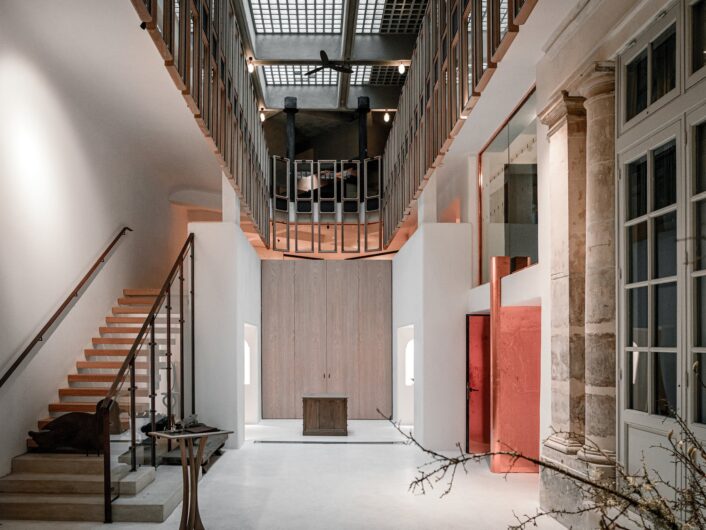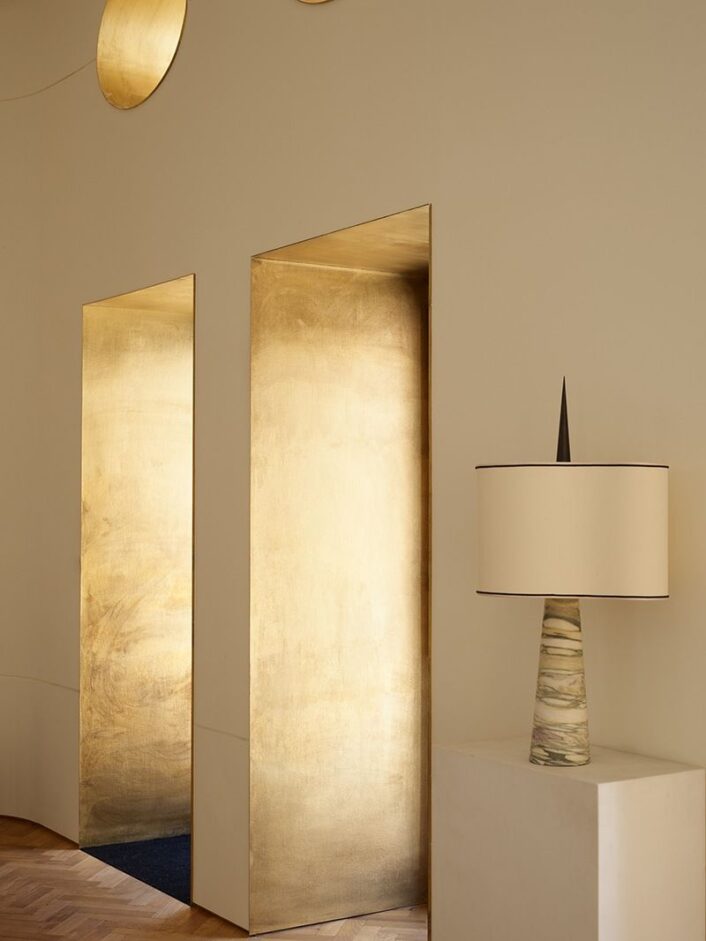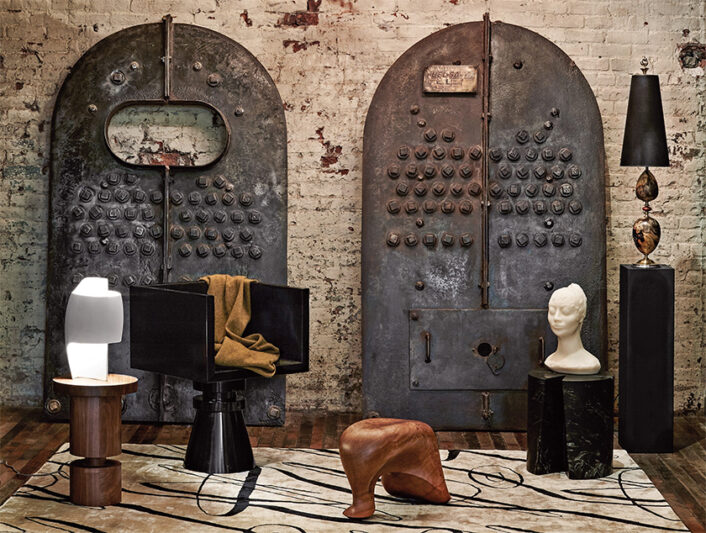Design
Æquō
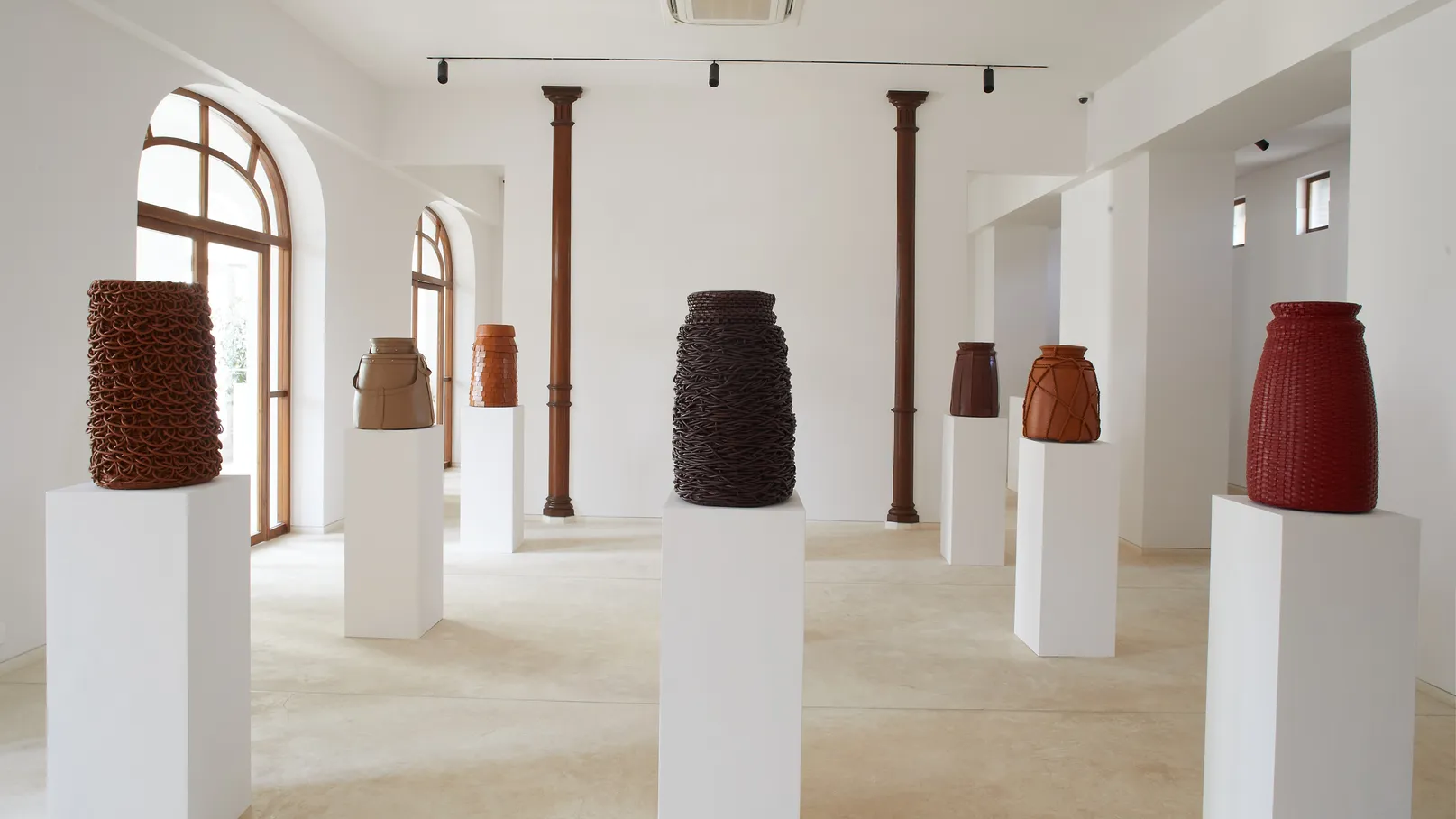
Cédric Courtin’s leather-wrapped, totem-inspired vessels.
Image courtesy of: Architectural Digest India, photographed by: Talib Chitalwala
Last year, Tarini Jindal Handa founded Æquō, India’s first collectable design gallery. Coming from a family of art patrons, this was a natural evolution for the Indian creative and entrepreneur; her grandmother founded an artist residency called Kanoria Centre for Arts and her mom started the magazine, “Art India.”
Studying fashion in London only added to Jindal Handa’s wide breadth of creativity; and the desire to preserve India’s culture while focusing on preservation and innovation helped cement the idea of founding a space where global designers could connect with Indian craftsmanship (courtesy of the company’s web site) “giving global importance to the country’s artisanal heritage.”
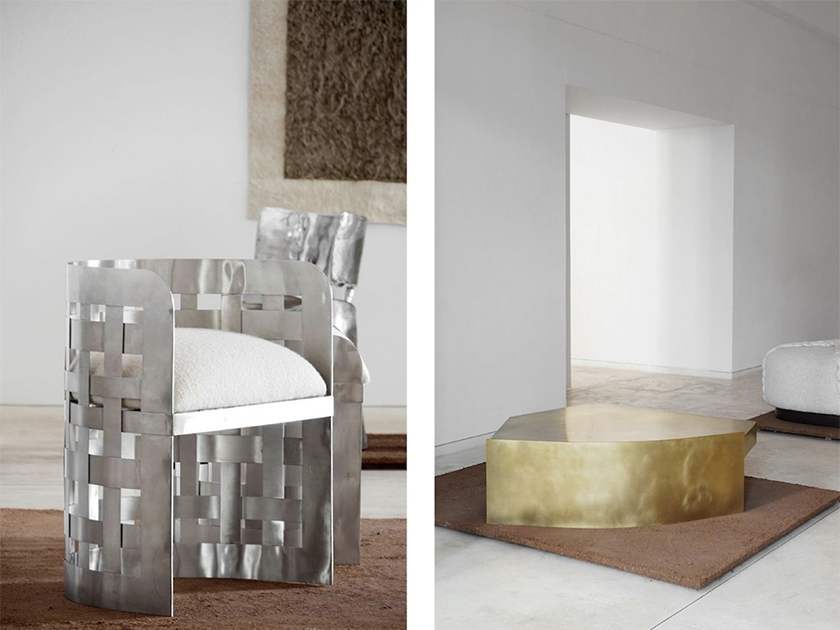
Traverse Chair- Low by Florence Louise, a French designer who envisioned the collection by referring back to Mumbai’s many workshops that are able to manipulate metal sheets. The chair is available in two heights.
Dyad Low Table also by Florence Louis. The table is part of a limited series of tables that is “a study of contrasts, both in texture and form.
Image courtesy of: Surface Magazine
The gallery is based in Mumbai’s historical center; it is here that Jindal Handa hopes materials can commingle with makers and designers. She is adamant about helping designers see their work with a different lens… one that is open to envisioning their work using ancient techniques and traditional methods such as handloom textiles, embroidery, carpentry, silverware, and papier-mâché.
Jindal Handa understands that global minds need to work in India in order to formulate different perspectives and languages… ways to compliment India’s long and storied heritage. She told Wallpaper, “This way, international contemporary designers can encounter India’s diverse and profound techniques through the gallery’s extensive network of artisans.”
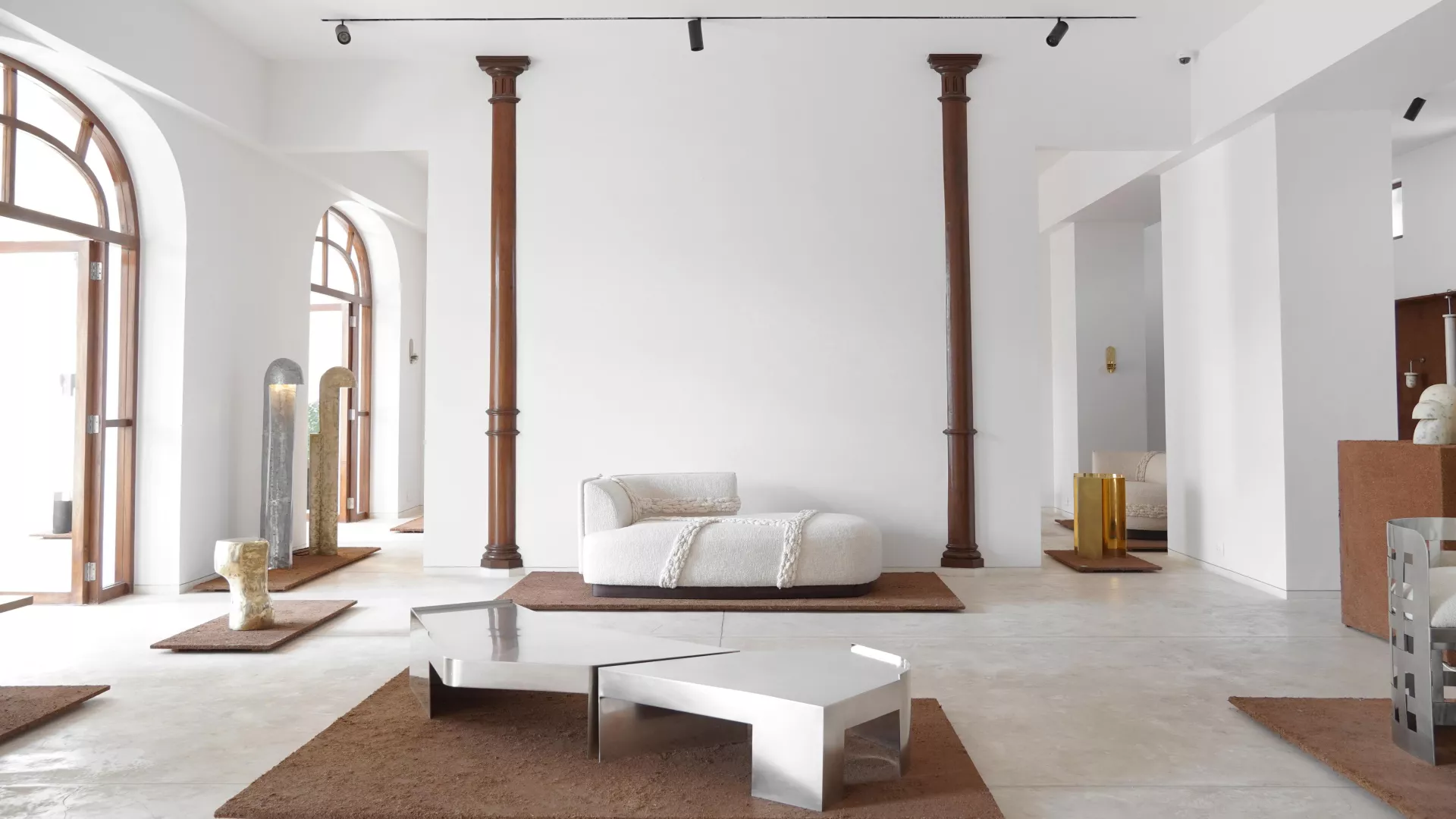
Inside the gallery’s elegant, clean-lined interior…
Image courtesy of: Wallpaper
Jindal Handa hopes that she can do her part in getting Indian craftsmanship the respect that it deserves on an international level. She has worked on this goal along with Florence Louisy, a French designer and the collective’s creative director. The pair met when Jindal Handa worked with the designer to develop pieces for her own home; she was instantly impressed and knew that a collaboration was necessary!
The duo signed on Ivan Oddos to reimagine the old building that now houses the gallery, plus two workshops and a showroom. The innovative architect used the structure’s double-height windows to illuminate the interior and showcase the former monastery’s beautiful bones. Large open spaces flanked by glass doors allowed for easy reconfiguration. As for the interior, all of the Kota stone, red terracotta, and marble was locally-sourced.
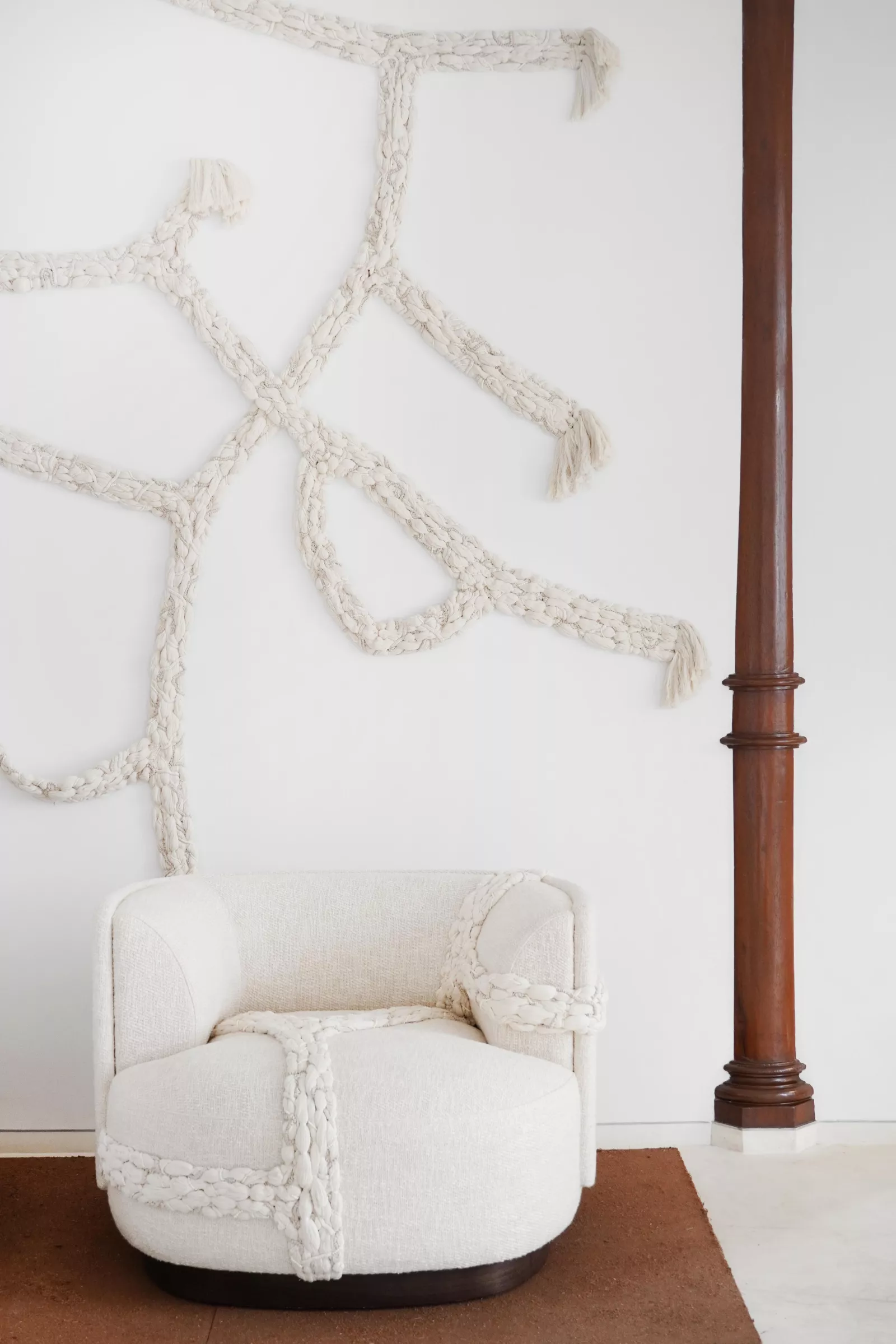
Ilia armchair
The embroidery, a collaboration with the Chennai-based embroidery studio Vastrakala, was funded by Jean-François Lesage. The embroidery design is a juxtaposition of rough yet refined bundle of ropes and bone beads.
Image courtesy of: Wallpaper
For the gallery’s opening, Louisy created eight collections where each piece kept the material in as close to its natural state as possible. A favorite is the Ilia Collection, an assemblage of seating that is available in both embroidered and pure cotton. The material is meant to rekindle memories of Indian cotton fields, all while honoring traditional Indian embroidery techniques that have been around for centuries.
This year, for the gallery’s first anniversary, Jindal Handa showed screens designed using a silver inlay technique that is endemic to Bidar, it is called bidri. The complicated process is usually only seen on small objects, however the master craftsman Mohammad Abdul Rauf was able to masterfully work with Louisy’s designs to create amazing contemporary design in the form of illustrations by the artist and designer Boris Brucher.
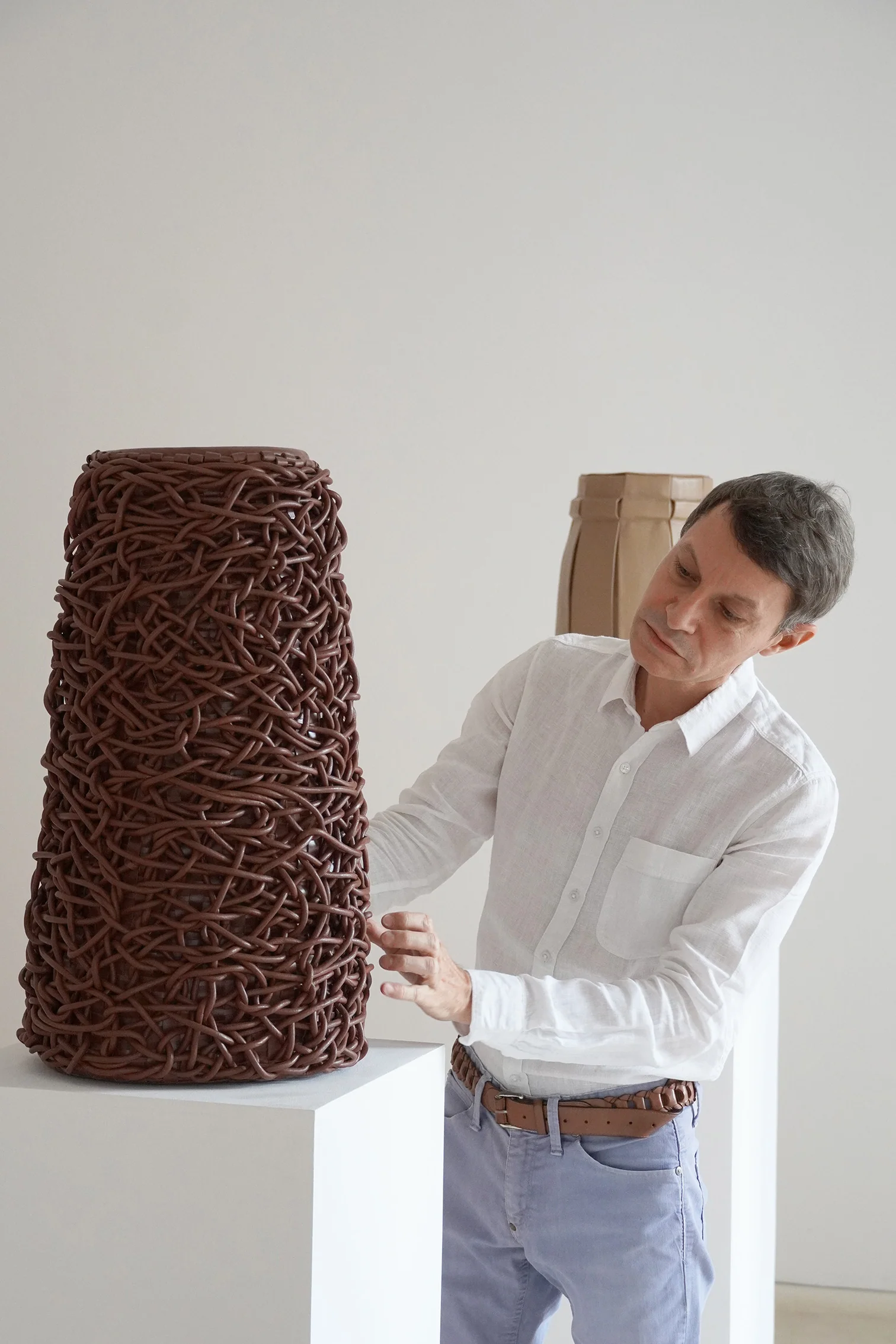
Cédric Courtin with some finishing touches!
Image courtesy of: Æquō
The collaboration with Cédric Courtin was monumental in that he is known in the fashion and design world for his R&D with leatherwork techniques. With decades of archives, it was the (courtesy of Architectural Digest India) “pulled out signature techniques to wrap a set of vessels in gleaming swathes of leather, using craftsmanship as a medium, method, and message.”
While perusing the archives with Louisy, the pair began collecting wooden vessels from across India. These vessels became Courtin’s prototypes for experimenting with different weaving finishes and techniques: braiding, interlacing, fringing, embossing, and basket-weaving. What ensued was a stunning 39-piece collection. Louisy describes the collection in her own words, “For me the beauty of this collection lies in the way it tells the story of Cédric’s expansive archives, which is a wonder in itself. Developing this collection was an incredible experience. We learnt from each other, fed off each other’s knowledge, which opened up new ways of thinking for the both of us.”
